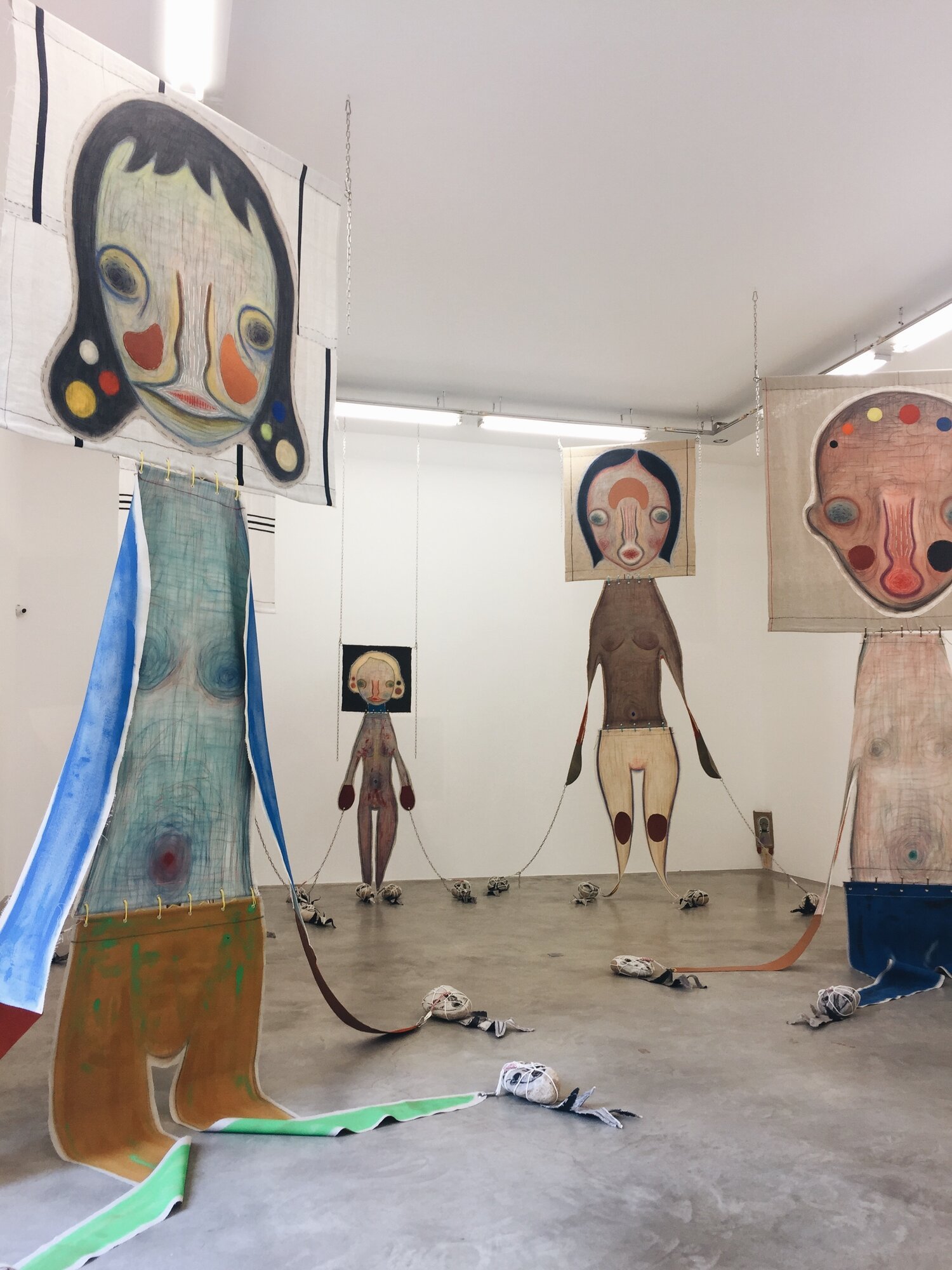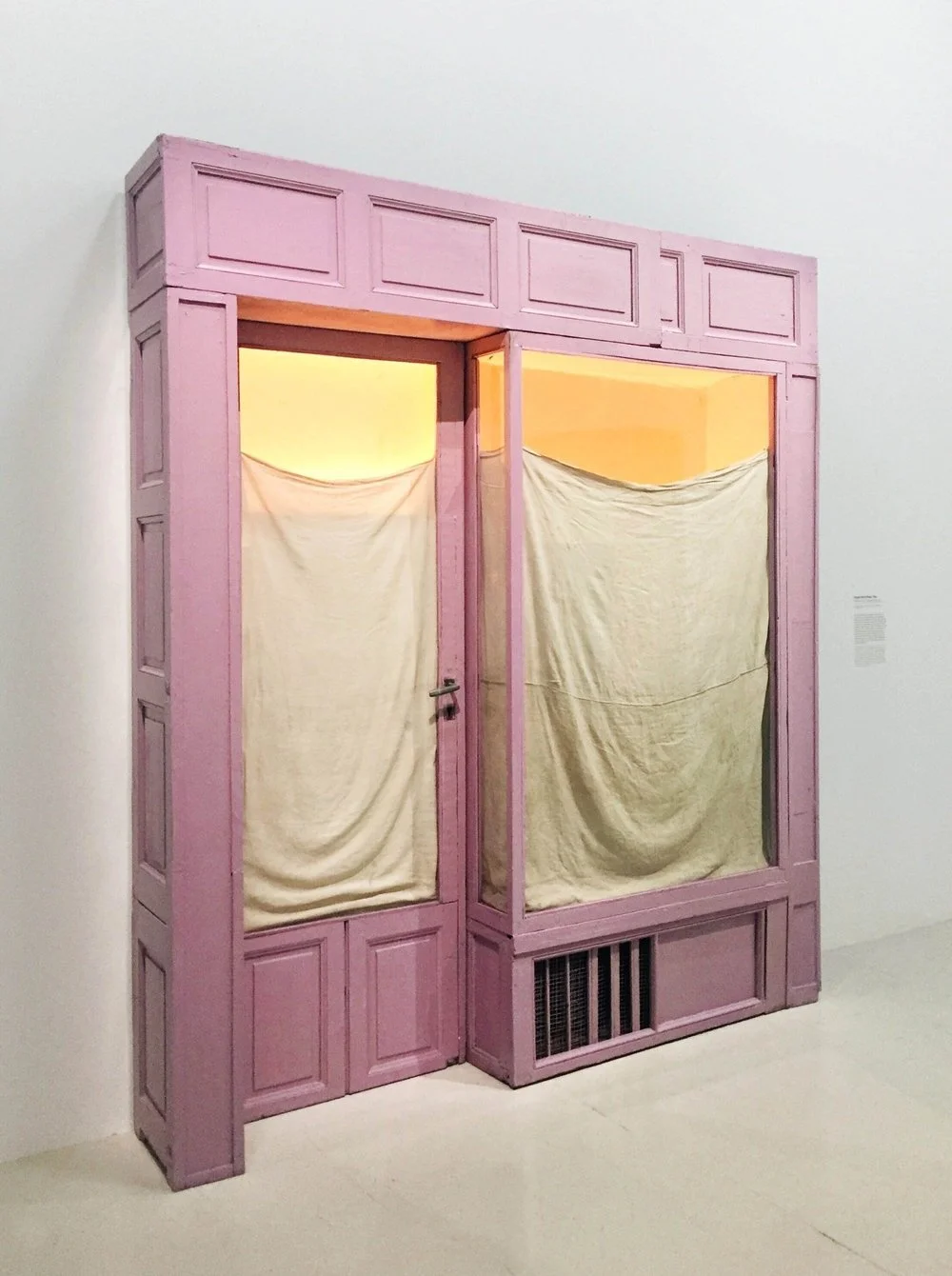Gallery Review: Perrotin Paris
Galerie Perrotin is a blue-chip contemporary art gallery founded in the 1990s. It has since become one of the most recognized names in the art world, with locations spanning the globe including in Paris, New York, Hong Kong, and Tokyo. The gallery focuses on creating immersive settings to experience the work of leading contemporary artists. Perrotin also publishes catalogues and editions and has recently expanded its programming to include panel discussions and educational workshops.
Its Paris gallery is the original location, situated in the Marais neighborhood in an 18th-century mansion with three gallery spaces. The location also features a bookstore and garden. Because of Perrotin’s size and renown, the space embodies a type of museum/gallery hybrid. The building is set up in a modern museum-like fashion, with exhibition pamphlets and QR codes for contextual information via smartphone. Only the front desk staff speaking numbers over the phone reminds you that you are in fact in a commercially-driven entity.
As with most galleries, entry is free. I visited to explore the space and see the two exhibitions on display. Here were the hightlights:
Izumi Kato
Upon entry, the first exhibition on display features the work of Japanese artist Izumi Kato. The artist creates human-like figures inspired by sources ranging from Japanese pop culture to Shinto spirituality. The resulting figurative depictions (manifested through paintings, sculptures, and installations) are fluid, strange, yet overall captivating.
While the faces of many of his subjects are extremely expressive, they lean neither towards towards hostile nor jubilant. Rather, the effect is a surreal—at times uncanny—display of souls. His sculptures are reminiscent of primitive totems, emphasizing the connect between physical and spiritual worlds. The bright colors add an innocence and whimsy that keeps the show from feeling haunted.
The most immersive section of the exhibition was a room featuring larger-than-life humanoids suspended from the ceiling to the floor, made of fabrics assembled in a collage-like manner. These figures are fastened to the floor by chains anchored with rocks, as if an attempt to bind ephemeral beings to the earth. Kato encourages a wide variety of interpretations, overall hoping these figures invite viewers to recognize themselves.
This exhibition will be on view until October 10, 2020.
JR
On another note was the documentary-style exhibition by artist JR. Named after a maximum-security prison in California, Tehachapi is a collaborative, artistic project capturing the current reality of a group of inmates serving time.
JR undertook a photographic series comprising forty-eight inmate portraits accompanied by a narration of their experiences. The exhibition features the portraits and stories in film-installation format. The artist also created photo-collages of the prison yard, assembling colored landscapes, black-and-white photos, and concrete lots, culminating in large-scale, minimalist conceptual puzzles.
Tehachapi, Daytime, Triptych embodies the spirit of the exhibition: a large aerial-view photograph of the prison complex that upon further glance reveals a group of tightly packed inmates staring directly at the viewer. JR painted this portrait on-site, directly on the prison’s yard, where it would only be clearly visible from directly above. The triptych photograph is the sole entity concretizing its existence in the world, as the painting was destroyed in under three days from the footsteps of the prison’s population. The ephemeral nature of JR’s work highlights the subjectiveness of time, which takes on a whole new meaning when considering a lifetime of incarceration.
This exhibition will be on view until October 10, 2020.


















